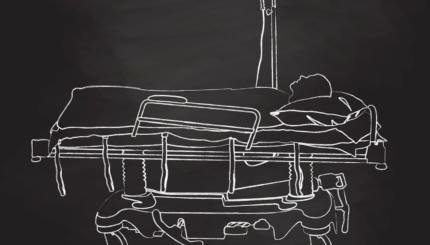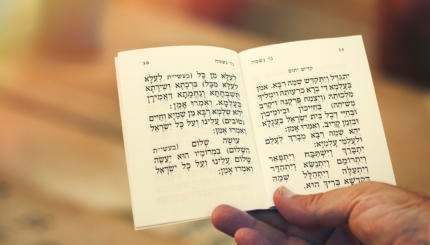A mourner usually enters the initial and most intense period of formal mourning, shiva, at an emotionally fraught moment: the completion of burial. While the end of could be a quiet and unmarked moment, Jewish communities past and present have adopted a variety of ways to mark the transition from shiva to sheloshim (the first month of mourning), easing the mourner into the next phase of re-entry into daily life.
The traditional end of shiva occurs on the seventh day of mourning (the sixth day after the funeral). Following the principle that part of a day counts as a day, most mourners conclude shiva on that morning–after services, if they are engaging in daily prayer.
The most common end-of-shiva practice today in many communities is for the mourner(s), on the morning of the last day of shiva, accompanied and even assisted by a friend or friends, to literally “get up from shiva.” The mourners rise from the low seat of the shiva week and confinement at home, and go for a walk around the block or its equivalent. In some communities, the friends recite the formula of consolation (“May God comfort you among all the mourners of Zion and Jerusalem”) and then say to the mourner(s), “Arise.”
Mourners who, following traditional law, have not been wearing leather shoes now put on regular shoes, replace the torn clothing or remove the badge of torn cloth they wore during shiva, and set out to encounter once again the world beyond the home where they have been largely confined.

Help us keep Jewish knowledge accessible to millions of people around the world.
Your donation to My Jewish Learning fuels endless journeys of Jewish discovery. With your help, My Jewish Learning can continue to provide nonstop opportunities for learning, connection and growth.
Sociologist Samuel Heilman, in When a Jew Dies, reports that “[a]mong the Lubavitcher Hasidim the drama is extended. The consolers leave the room [on the morning of the last day] with the… words of consolation.… Then, however, they reenter the room in which the mourners have arisen from their shiva in order to greet them with the verse, ‘May the Almighty mend all that tears his people, Israel,’ and then to wish for long years of life for those who have mourned.”
Other sources cite two alternative verses that the comforters may recite. Both are from the last chapters of Isaiah: “Your sun shall set no more, your moon no more withdraw; for the Lord shall be a light to you forever, and your days of mourning shall be ended” (60:20) and, “As a mother comforts her son, so I will comfort you; you shall find comfort in Jerusalem” (66:13).
For those whose shiva ends on Shabbat (after a Sunday funeral), most authorities agree that the outdoor walk is unnecessary. No public mourning restrictions apply on Shabbat, so the mourner(s) would anyway presumably be outside, interacting with others in the usual fashion.
Re-entry into Life
The walk outdoors serves two purposes: It announces to the world that the mourner is re-entering the public sphere, and it provides support for the mourner making that transition from withdrawal to engagement in society.
Heilman sees a parallel between the preparation of the deceased’s body for burial and the work of the friends who assist the mourner in rising and rejoining society: “Replaying the moment during the tahara when the dead were prepared by the living to leave behind their own mortality, the mourners are urged by the living to … ‘remove the filthy garments’ [Zechariah 3:4]. With this charge, they immediately change out of their torn garments and then, preparing for their passage out of mourning, place shoes upon their feet. In the process they are undergoing their own tahara, or purification from death.”
By these acts, the mourners assert that they choose not to join the departed but instead to remain, alive and active, in the world once enriched by the presence of their loved ones and now diminished by their loss.
Peretz Rodman is a Jerusalem-based rabbi, teacher, writer, editor, and translator. He was a founding editor of MyJewishLearning.com.
Sign up for a Journey Through Grief & Mourning: Whether you have lost a loved one recently or just want to learn the basics of Jewish mourning rituals, this 8-part email series will guide you through everything you need to know and help you feel supported and comforted at a difficult time.
Looking for a way to say Mourner’s Kaddish in a minyan? My Jewish Learning’s daily online minyan gives mourners and others an opportunity to say Kaddish in community and learn from leading rabbis.



